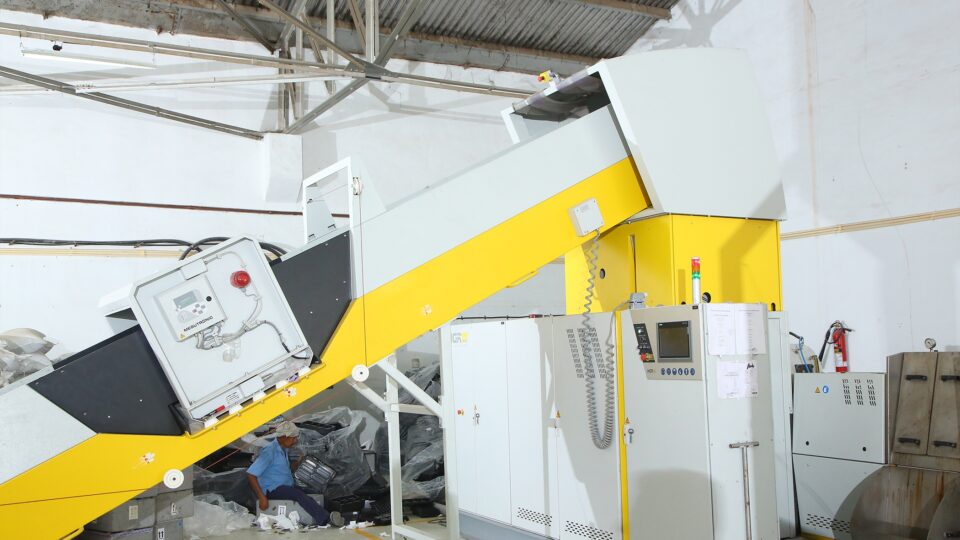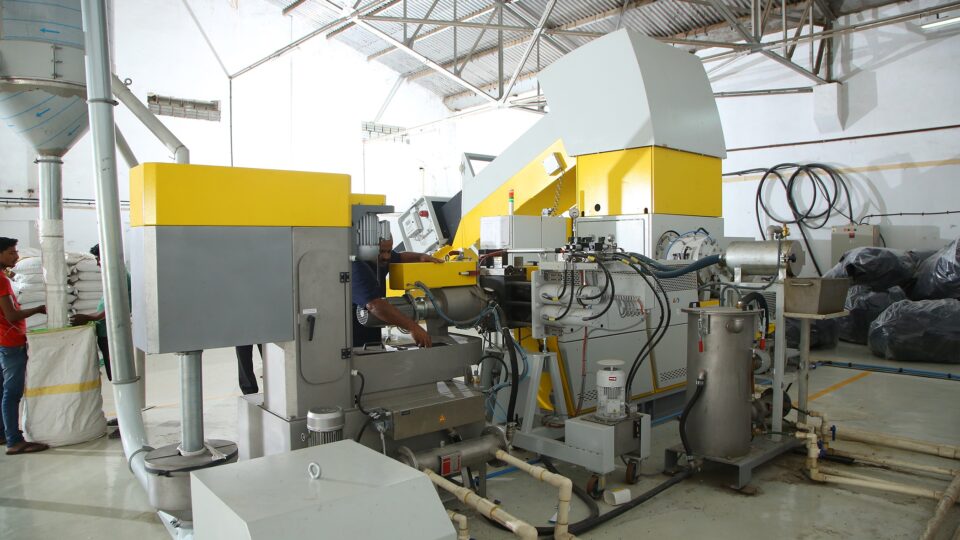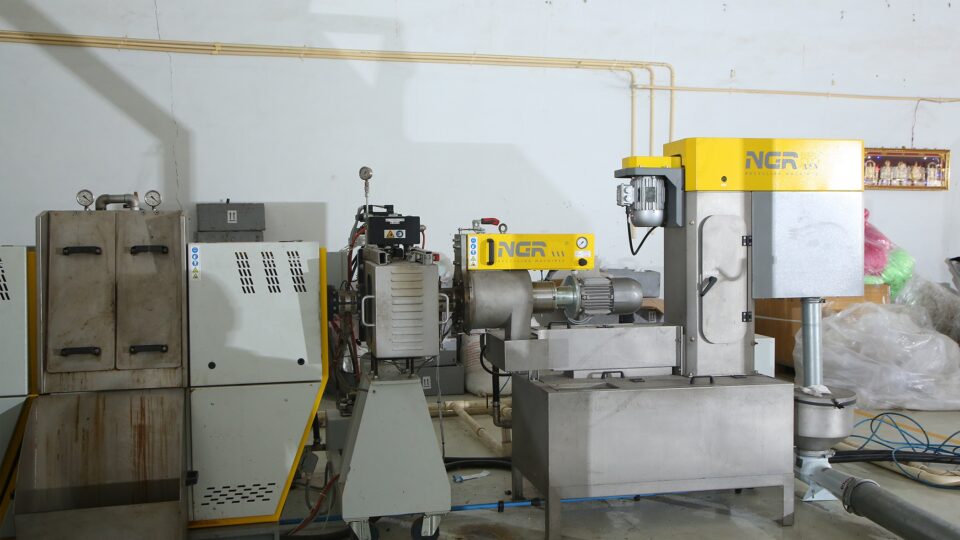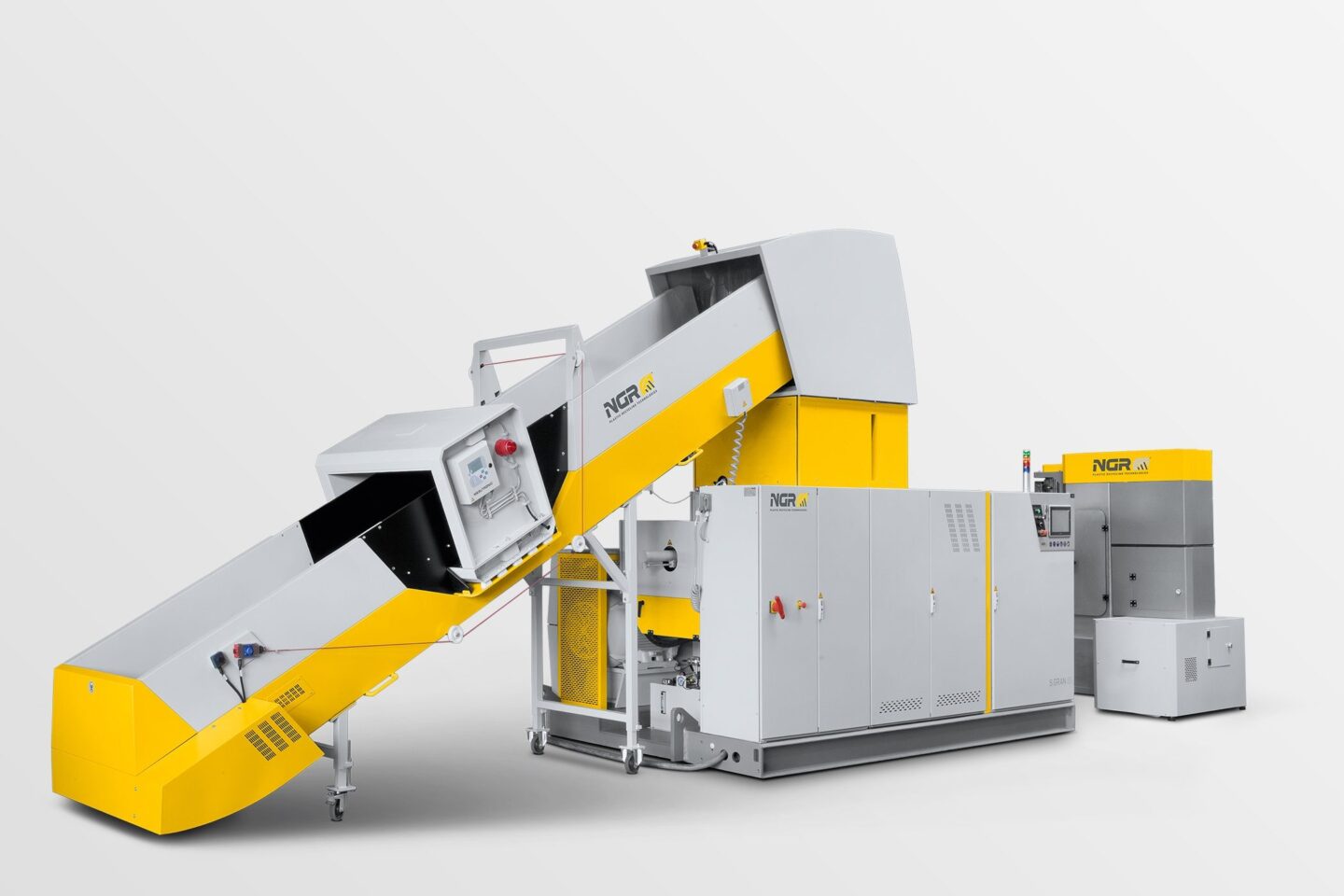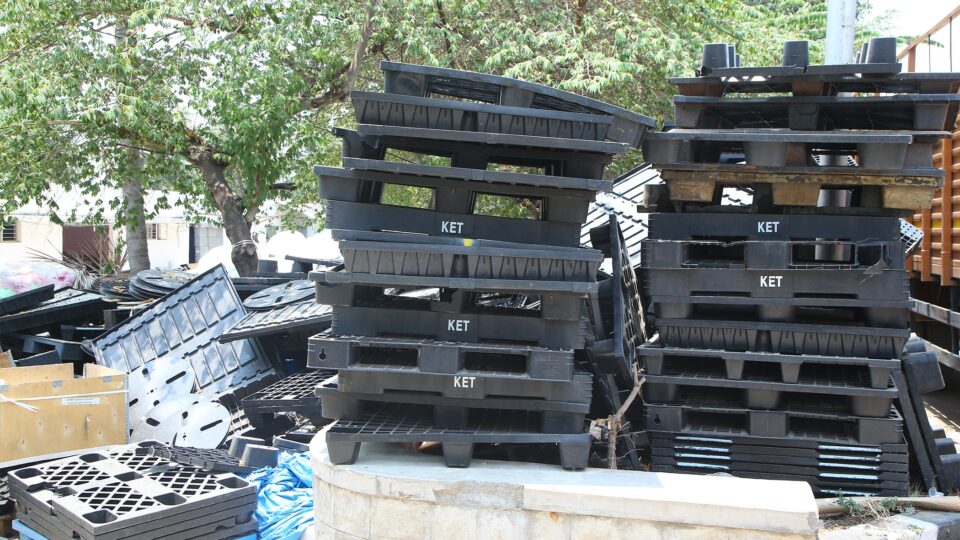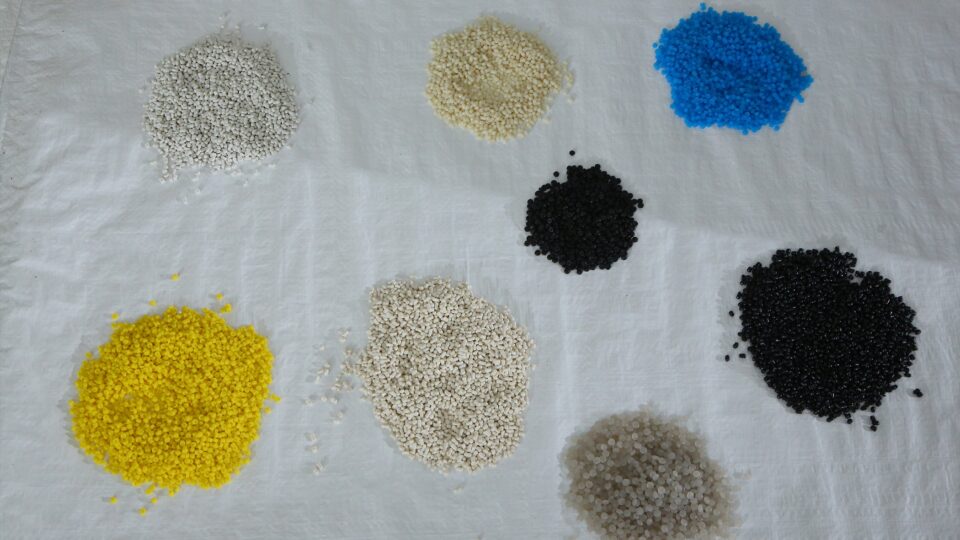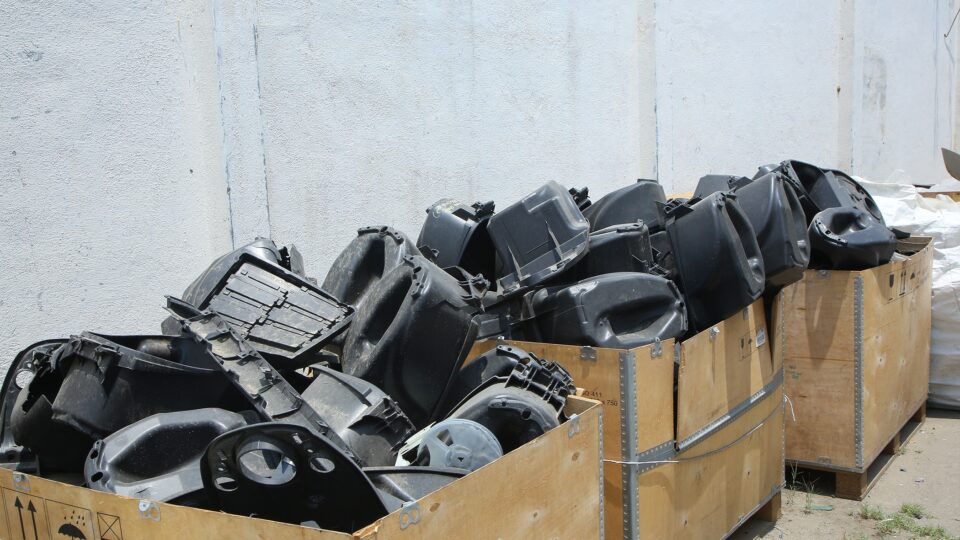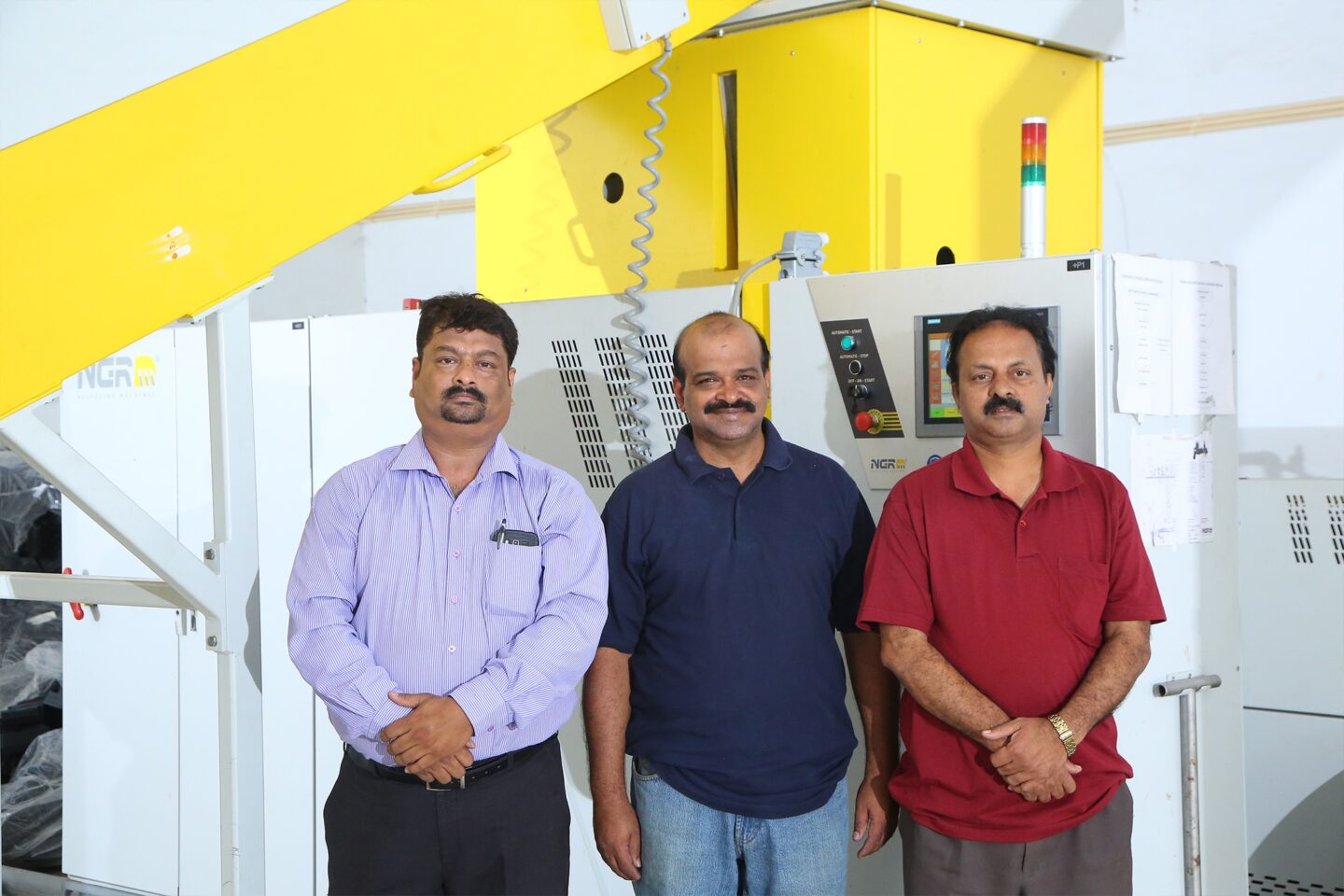A Clear Advantage with Leading European Technology
KG Nandini Enterprises Invests in NGR for Post-consumer Recycling Solution
From India to the USA: The Indian company KG Nandini Enterprises plans to use its know-how in electrical and electronics recycling to develop a branch in the western USA. KG Nandini Enterprises has chosen once again to deploy high-performance European recycling technology. Using an S:GRAN system built by the Austrian recycling specialist NGR Next Generation Recyclingmaschinen GmbH, the Bangalore-based Nandini will recycle plastics, including waste electrical and electronic equipment (WEEE), into high-quality pellets.
Originally, scrap metal was the main focus for KG Nandini Enterprises. In 1995, the company was founded in Bangalore, the IT high-tech center and third largest city in India. In 2008, KG Nandini Enterprises also began recycling electrical and electronics waste. Up to 80 employees work for the company in Bangalore in accordance with ISO standards.
Achieving success with European recycling know-how
KG Nandini Enterprises is forging ahead with environmentally-friendly recycling technology combined with the experience and leading know-how of the European company NGR. In 2015, KG Nandini Enterprises chose a plastics recycling system from NGR. Since then plastics ranging from computer waste to ABS plates, HDPE pipes and HIPS packaging have been recycled with an S:GRAN system. Currently, the company is reprocessing some 1080 tons of pellet. An S:GRAN will also be used in the branch planned for the US, and it is the logical extension of the previous, positive experiences at its Bangalore site. The recycling system from NGR achieves cost savings, without comprising the quality of the pellets produced.
Only highly-efficient processing maintains the material value
That’s the key summed up in a nutshell in plastics recycling: Are the pellets high quality? Can a consistent quality be provided on a reliable basis – and with a wide range of different output material in different material strengths? S:GRAN, a high-performance NGR system for high output, provides a reliable solution to this technical challenge. Cold shredding provides for highly efficient pellet production. With this efficient form of material shredding, high temperatures cannot develop. The S:GRAN is thus able to retain the material properties of the plastic as far as possible in the processing steps and produce a satisfactory quality of pellets for a mix of plastics in electrical and electronics recycling. In addition, the recycling systems of NGR are especially energy efficient. With the patented narrow design of the components, i.e. the shredder-feeder-extruder unit, the recycling can take place in a single process step.
Global recycling solutions lead to individual success
NGR recycling machines are in use in more than 70 countries worldwide. Understanding the complex challenges on site and finding profitable solutions calls for continual new ideas and approaches. The flexibility of NGR systems enables clients to implement customized and technically efficient recycling solutions. Yet the partnership with NGR continues after installation, as employees are trained fully on site. To help companies such as KG Nandini Enterprises to deploy state-of-the-art technology, additional support of the sales partner in India is required. Specialists were trained to carry out maintenance and troubleshooting activities, in order to ensure that qualified support is available on short notice.
Thinking ahead for a sustainable future
Keeping plastics in the economic cycle for a longer time is NGR’s most critical mission for the future. For this reason, the company is searching for new and sustainable answers to promote plastics as a valuable material for the next generation. In particular for WEEE management, the product design is gaining importance for the future. Instead of searching first in the recycling field for solutions, whether used already in electrical equipments, separating different plastics types from each other, or filtering metal wires from non-thermoplastics, sustainable product design takes into account from the star the potential material cycles. It does so to achieve, for instance, specific material combinations or easier mechanical separation via more recycling-efficient product design and thus to implement step by step a zero-scrap, sustainable material cycle.
